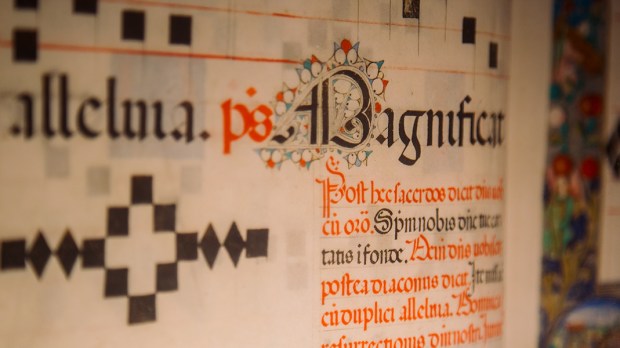The Cistercian convent of Santa María la Real de Las Huelgas in Burgos (Spain) preserves one of the most significant medieval music manuscripts: the Codex Las Huelgas. Dating back to around 1300, this manuscript is an important part of European cultural and spiritual heritage, the convent once being closely linked to the royal family of Castile.
The Codex Las Huelgas is a remarkable collection: it contains 186 musical compositions. Among these are 45 monophonic pieces, including 20 sequences, 5 conductus, and 10 Benedicamus tropes, alongside 141 polyphonic compositions. In short, it is a uniquely rich compilation of medieval music. The bulk of the music hails from the late 13th century, with some pieces originating from the earlier Notre Dame repertory of the 13th century, and a few additions from the early 14th century. What makes this codex particularly unique is that many of its pieces are found nowhere else, offering a rare glimpse into the musical practices of the time.
Crafted on parchment, the codex features staves written in red ink with Franconian notation– a musical notation method created by the famed music theorist Franco of Cologne. The majority of the manuscript was penned by a single scribe, but as many as 12 individuals contributed, including corrections and later additions.
The music in the Codex Las Huelgas was intended for performance within the convent, which boasted a choir of 100 women during the 13th century. Interestingly, and despite Cistercian regulations against polyphonic music, it appears that two-part polyphony was permitted, as evidenced by two-part solfège exercises within the manuscript..
The Codex Las Huelgas was rediscovered in 1904 by two Benedictine monks researching Gregorian chant. It was a pivotal moment in the study of medieval music. Yet, it wasn’t until the 1930s that the music was published, allowing a broader audience to appreciate this historical treasure. A subsequent edition in the 1980s further cemented its importance.
The Codex Las Huelgas is much more than a large collection of medieval music. It offers a privileged glimpse into European medieval spiritual and cultural life. The dedication of these nuns to their faith and the art of music reminds us of the profound connection between spirituality and the arts. For modern Catholics, this manuscript is not only an artifact of historical significance but also a symbol of the enduring power of music in the expression of faith.



